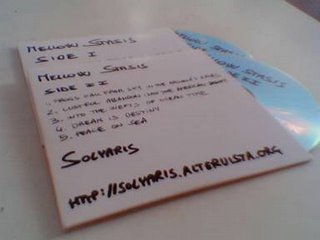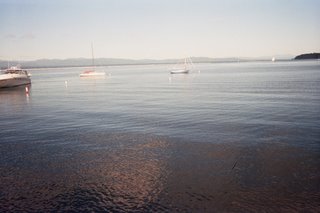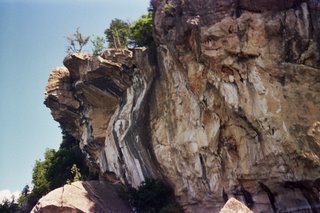For the past two weeks I've been so deeply involved in my recording projects that I've not stopped to post my notes on the process here. But now, on the cusp of April, I've reached a state of completion and arrival, so I'll step back for a bit and try to describe what I' ve been up to.
First of all, my Americana song project is finished. And it's been renamed HORIZON IS A SONG-- from a line in my song "Ridin' Ahead of the Storm."
I had a surge of activity during March. It started with recording a short voice and Dobro version of the old gospel tune "Farther Along." I wanted to capture the sense of a gospel radio broadcast coming from far away in distance, and maybe even time. So I EQd and treated the recording for an old radio sound. I also dipped into a stash of radio static and dial-turning sounds I recorded a while ago, and placed them in the mix. The result is a sort of aural bridge between songs and feelings on the record.
Next up, the same day, was a simple voice and guitar version of a song I wrote when I was in my twenties. "Passport Photo" is, again, a late-night/early morning song, this time from a sort of jazz-bossa perspective. (It's actually a tribute to Lester Young, who was my absolute musical hero for a long time, a long time ago.) I did it in two takes, sitting in a carpeted hallway for that soft, intimate, close-up, dead-room sound.
I added a second voice and sparse second guitar, with bleed from the monitors in the other--much harder-surfaced-- room adding a cool sense of space with a strange, tight reverb. A couple of quick mixes, a touch of EQ and compression and
voila: A jazzbo hipster vignette from my distant past!!!
A few days later came the piece that made the record finished. I'd been fooling around for a couple of days with my daughter's mandolin when, one morning, a song formed. I set up mics and tracked it in 3 takes. I spent the rest of the day adding more vocals, bass, and steel, then made a few mixes.
Later, a comment from Robin about the lead vocal sounding odd inspired me to again pull out that magic Radio Shack dynamic mic. With the mic handheld, I triple-tracked the lead vocal part. Panned together, those voices made for an instant, subtle Simon and Garfunkel sheen. Cool!
Eight hours spent on less than two minutes of music. But the next day I realized that this song-- called "That Sound"-- captured the theme of the album. One line in particular: "And I wonder if she'll hear it in the darkness when they broadcast this song.." nailed the essence of what the whole project was reaching for.
So now, the last song written would be the first on the album.
After a week or so of tweaking, remixing-- and fades, edits, etc.-- I realized that the album was finished. It had gone from hope and desire to actual entity.
Next time out, I'll get back to THE LAKE EFFECT, which, by the way, seems to have acquired a new name too....




